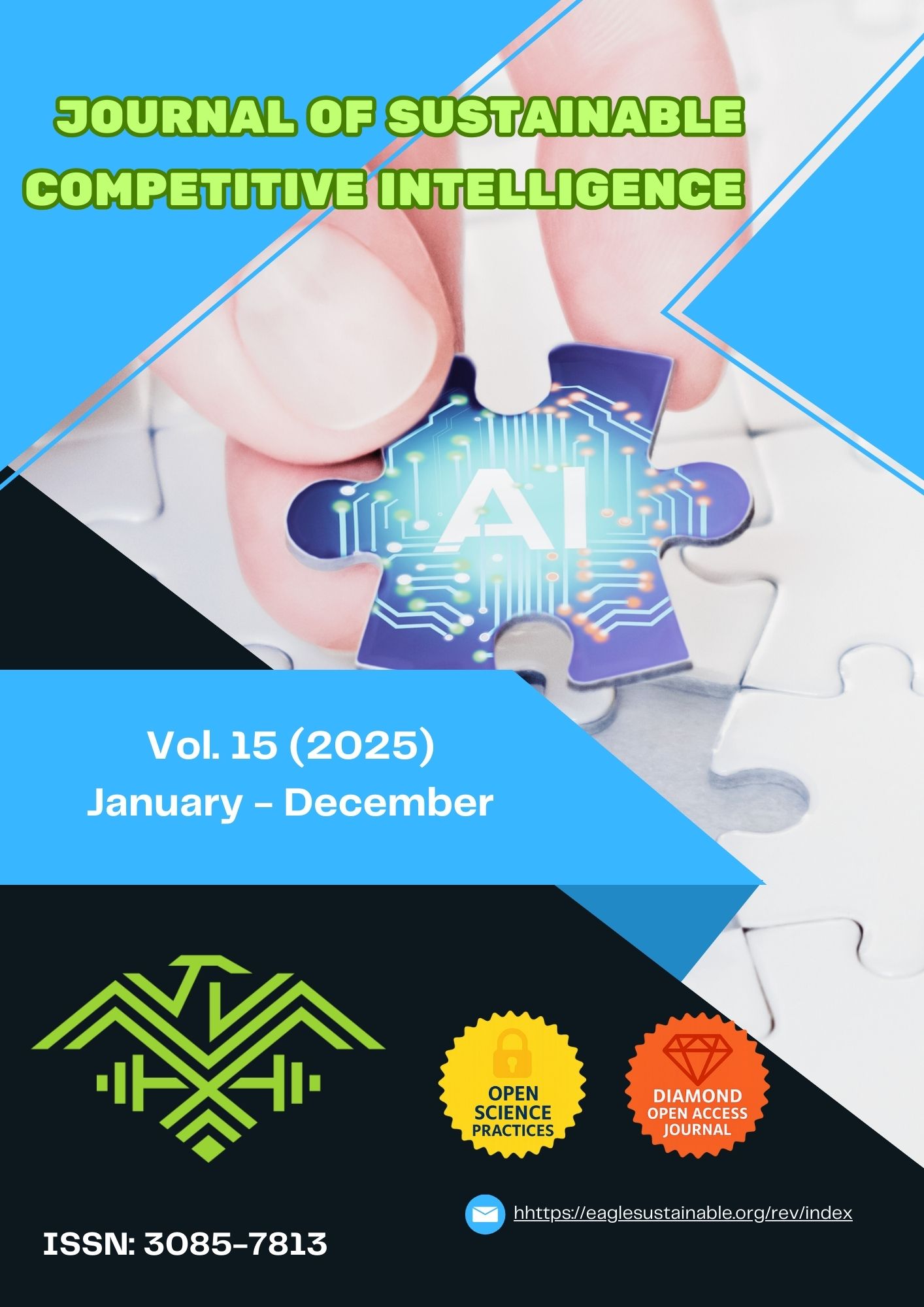Resumen
Objective: This study seeks to substantiate the prospects for using blockchain technologies as a mechanism to attract Islamic finance to the Russian regions, with the dual aim of mitigating sanctions-related restrictions and fostering integration into global Islamic financial ecosystems.
Methodology/Approach: The research employs econometric and systems analysis to assess the macroeconomic externalities of blockchain-driven Islamic finance inflows. A methodological toolkit was developed and tested to estimate potential market capacity, using data from four Russian regions (Tatarstan, Bashkortostan, Chechnya, Dagestan) through 2030. The approach incorporates substitution modeling of lost Western capital, scenario analysis, and the application of blockchain-based financial gateways.
Originality/Relevance: The originality of this work lies in linking two underexplored areas—Islamic finance and blockchain technologies—in the context of Russia’s geoeconomic reorientation toward Asia and the Global South. The study provides an innovative framework for replacing Western capital flows with investments from Islamic finance markets through decentralized fintech solutions.
Main Conclusion: Findings demonstrate that the use of blockchain-based financial mechanisms can significantly expand the capacity of Russian regions to attract Islamic finance. Tatarstan and Bashkortostan show the highest potential, while Chechnya and Dagestan present smaller but strategically relevant capacities. Blockchain solutions are positioned as a breakthrough tool for overcoming international financial isolation and enabling long-term convergence with Islamic digital ecosystems.
Theoretical/Methodological Contribution: The study advances the methodological basis for assessing fintech’s role in regional investment attraction by introducing a quantitative model that integrates substitution coefficients, market capitalization ratios, and penetration indices. It enriches the theoretical discourse on blockchain’s economic externalities and provides policymakers and practitioners with actionable instruments for embedding Islamic finance within regional development strategies.
Citas
Bank of Russia. (2024). Obzor rynka partnerskogo finansirovaniya po itogam anketirovaniya za 9 mesyatsev 2024 goda [Review of the partnership financing market based on survey results for 9 months of 2024]. Available at: https://cbr.ru/analytics/develop/2024_1. Accessed on: March 25, 2025.
Beilin, I. L. (2024). Investitsii v osnovnoy kapital neftegazovogo regiona kak indikator yego gotovnosti k finansovomu embargo i transformatsii global'nogo energeticheskogo balansa [Investments in fixed capital of the oil and gas region as an indicator of its readiness for the financial embargo and transformation of the global energy balance]. Finance: Theory and Practice, 28(3), 157-173. https://doi.org/10.26794/2587-5671-2024-28-3-157-173
Belova, M. T., & Rizvanova, I. A. (2024). Vliyaniye detsentralizovannykh finansov na deyatel'nost' traditsionnykh finansovykh posrednikov [The impact of decentralized finance on the activities of traditional financial intermediaries]. Finance: Theory and Practice, 28(6), 143-153. https://doi.org/10.26794/2587-5671-2024-28-6-143-153
Campanella, F., Serino, L., Battisti, E., Giakoumelou, A., & Karasamani, I. (2023). FinTech in the financial system: Towards a capital-intensive and high competence human capital reality? Journal of Business Research, 55(3), 113376. https://doi.org/10.1016/j.jbusres.2022.113376
Chodorow-Reich, G., Feiveson, L., Liscow, Z., & Woolston, W. G. (2012). Does state fiscal relief during recessions increase employment? Evidence from the American Recovery and Reinvestment Act. American Economic Journal: Economic Policy, 4(3), 118-145. https://doi.org/10.1257/pol.4.3.118
Fedorova, E. A., Korkmazova, B. K., & Muratov, M. A. (2016). Spillover-effekty v rossiyskoy ekonomike: regional'naya spetsifika [Spillover effects of the Russian economy: Regional specificity]. Economy Regions, 12(1), 139-149. https://doi.org/10.17059/2016-1-10
Friedman, M. (1996). Kolichestvennaya teoriya deneg [The quantity theory of money]. Trans. from English. Moscow: Elf-Press.
Islamic Corporation for the Development of the Private Sector, & Refinitiv. (2022). ICD – Refinitiv Islamic finance development report 2022: Embracing change. Available at: https://icd-ps.org/uploads/files/ICD%20Refinitiv%20ifdi-report-20221669878247_1582.pdf. Accessed on: March 25, 2025.
Klimova, E. S. (2017). Keynsianskaya i neoklassicheskaya kontseptsii sprosa na investitsii [Keynesian and neoclassical concepts of investment demand]. Young Scientist, 5, 171-173.
Krinichansky, K. V., & Annenskaya, N. E. (2022). Ponyatiye i perspektivy finansovogo razvitiya [Financial development: The concept and prospects]. Voprosy Ekonomiki, 10, 20-36. https://doi.org/10.32609/0042-8736-2022-10-20-36
Krinichansky, K. V., & Zeleneva, E. S. (2024). Fintekh-sektor v kontekste finansovogo razvitiya i problem yego izmereniya [Fintech sector in the context of financial development and problems of its measurement]. Finance: Theory and Practice, 28(5), 121-132. https://doi.org/10.26794/2587-5671-2024-28-5-121-132
Martinez, V. G., Hernandez-Alvarez, L., & Hernandez Encinas, L. (2020). Analysis of the cryptographic tools for blockchain and bitcoin. Mathematics, 8(1), 131. http://dx.doi.org/10.3390/math8010131
Mehta, N., Gupta, S., & Maitra, Sh. (2023). Vliyaniye pryamykh inostrannykh investitsiy na proizvodstvennyy sektor: dokazatel'stva iz indiyskoy ekonomiki [Impact of foreign direct investment on manufacturing sector: Evidence from the Indian economy]. Finance: Theory and Practice, 27(1), 116-126. https://doi.org/10.26794/2587-5671-2023-27-1-116-126
Mill, J. S. (1848). Principles of political economy with some of their applications to social philosophy. London: John W. Parker.
National Rating Agency. (2024). XII Yezhegodnaya otsenka regionov Rossii investitsionnoy privlekatel'nosti “razvorot na vostok” [XII Annual assessment of investment attractiveness of Russian regions "Pivot to the East"]. Available at: https://www.ra-national.ru/wp-content/uploads/2024/11/investicionnaja_privlekatelnost_regionov_2024-3.pdf?ysclid=m8oci7apk8402150062. Accessed on: March 25, 2025.
Official portal of the Republic of Bashkortostan. (n.d.). Available at: https://www.bashkortostan.ru. Accessed on: March 7, 2025.
Pavlov, A. A. (2023). Vliyaniye tekhnologiy Fintech na razvitiye bankovskogo sektora [The impact of fintech technologies on the banking sector development]. Economics and Society: Contemporary Models of Development, 13(2), 109-120. https://doi.org/10.18334/ecsoc.13.2.119475
Safiullin, M. R., & Elshin, L. A. (2018). Otsenka i prognozirovaniye regional'nykh ekonomicheskikh tsiklov operezhayushchego razvitiya (na primere regionov Privolzhskogo federal'nogo okruga) [Assessment and forecasting of regional economic cycles of advanced development (on the example of the Volga Federal District regions)]. Nizhny Novgorod: Nikita Vladimirovich Kuznetsov.
Sharifullin, M. D. (2025). Al'ternativnyye mekhanizmy realizatsii mezhdunarodnykh platezhey na osnove blokchen-platform [Alternative mechanisms for implementing international payments based on blockchain platforms]. Competitiveness in the Global World: Economics, Science, Technology, 2, 180-183.
TatCenter. (2024, January 19). Investitsii v ekonomiku Tatarstana iz-za rubezha sostavili $ 67,8 mln [Foreign investments in Tatarstan's economy reached $67.8 million]. Available at: https://tatcenter.ru/news/investiczii-v-ekonomiku-tatarstana-iz-za-rubezha-sostavili-678-mln/?ysclid=m8n2gpe5tt901985319. Accessed on: February 1, 2025.
Yeremin, V. V. (2016). Mul'tiplikator investitsiy: sushchnost', poetapnyy analiz, vliyaniye na dinamiku innovatsiy [Investment multiplier: Essence, analysis, and the impact of innovations on the economy]. Moscow: MFUA.
Yao, Y., Li, J., & Sun, X. (2021). Measuring the risk of Chinese Fintech industry: Evidence from the stock index. Finance Research Letters, 39(3), 101564. https://doi.org/10.1016/j.frl.2020.101564

Esta obra está bajo una licencia internacional Creative Commons Atribución 4.0.
Derechos de autor 2024 Journal of Sustainable Competitive Intelligence






